Fibro Fix Blog — wellness and prevention
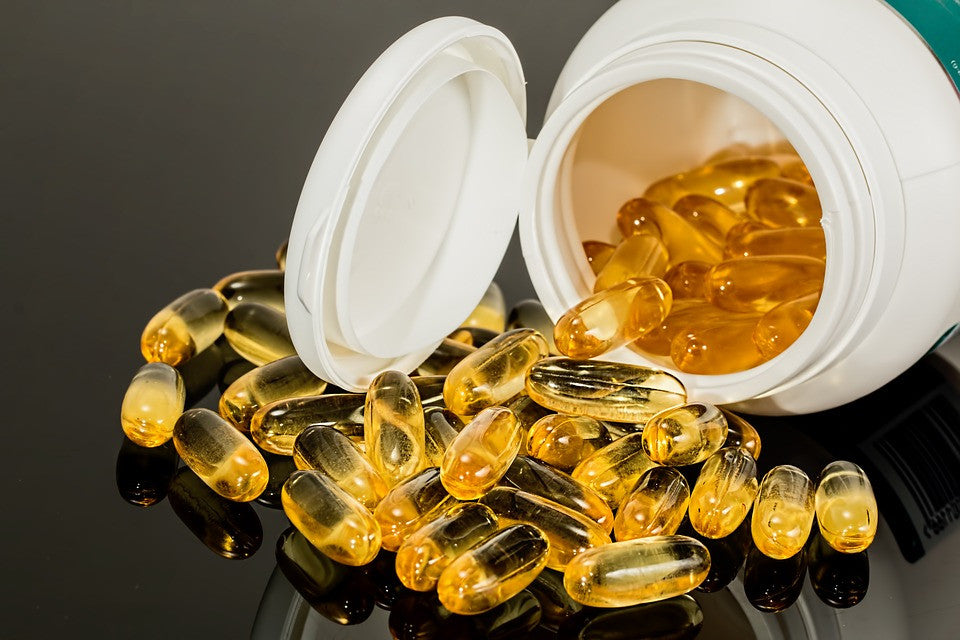
CoQ10 & Exercise - What You Need to Know 0
Find yourself laying on the couch with an ice pack or heating pad after an intense workout?
Feel like a heavy lifting session leaves you so sore you’re out of commission for days?
Maybe you’ve lost some pep in your step, and can’t seem to muster the energy to participate in your favorite physical activities as often as you’d like.
Appropriately scaling the frequency and intensity of exercise is the place to start, but there are nutritional supplements that might offer some benefit when it comes to energy levels, athletic performance, and recovery from exercise. One such nutrient is coenzyme Q10, usually just called CoQ10.
Another name for CoQ10—ubiquinone—gives us an idea of just how important a compound it is, and how commonly it’s found in living organisms. It is “ubiquitous,” since it’s found in almost all cell membranes and many other structural components of the body. CoQ10 is a fat-soluble compound synthesized inside the body through the same biochemical pathway used for the internal production of cholesterol. Since the body can make CoQ10, it’s not an “essential” nutrient, but, as is the case with many vitamins and minerals, supplemental amounts can be beneficial for giving the body a leg up when it comes to performing certain tasks.
Dietary sources highest in CoQ10 are animal proteins (beef, poultry, and fish), with smaller amounts occurring in nuts and seeds, and even smaller amounts found in some vegetables and fruits. Among animal sources of CoQ10, the richest concentrations occur in hardworking tissue, such as heart, liver, and kidney. (Maybe eat some offal now and then! Offal isn’t awful; it’s extremely nutritious!)
The most well-known function of CoQ10 is as a required element for energy production at a cellular level. Inside almost all of your cells (except red blood cells and a few others), energy is produced in microscopic generators, known as mitochondria. Perhaps you remember the term “electron transport chain” from high school biology or a biochem class. The electron transport chain is how cellular energy is created, and CoQ10 is a vital component of the process.
Because of CoQ10’s role in generating energy, supplemental amounts might give athletes a slight performance edge. Studies that looked at both athletically untrained and well-trained individuals reported mixed results regarding the effect of CoQ10 on physical performance. Some studies showed an increase in exercise capacity and oxygen consumption, while others showed no benefit. Additional studies demonstrated CoQ10 as being beneficial for reducing subjective feelings of fatigue, which might help an athlete—or even a weekend warrior—work harder or longer at their chosen activity.
The place where CoQ10 seems to have a more powerful effect is in limiting the cellular damage caused by exercise, and therefore, possibly leading to better recovery. Of course, exercise is a good thing, and regular physical activity is absolutely part of a healthy lifestyle. But, don’t forget that it’s also stressful! It’s not stressful in the way that sitting in a traffic jam is. It’s stressful on a cellular level. Exercise causes microscopic tears and damage to muscle fibers. In fact, this is the whole point of exercise: induce a small amount damage, and it is in recovering from this low-level damage that the muscles actually become stronger.
However, too much of this microscopic injury, without the right nutrients to help limit it, can lead to muscle pain, inflammation, and to more serious health conditions that may result from long-term, unresolved oxidative stress in the body. The good news is, CoQ10 has been proven effective for significantly reducing oxidative stress and inflammation induced by strenuous exercise, and also for reducing markers of damage to muscle tissue.
Bottom line: if you’re currently a couch potato, CoQ10 isn’t going to turn you into an Olympic medalist. But, by decreasing the cellular damage caused by exercise, and reducing feelings of fatigue, it might help you engage more frequently in physical activities you enjoy, which may contribute to overall improved health.
View my recommended and trusted CoQ10 here.
Sources
- Diaz-Castro J et al. Coenzyme Q(10) supplementation ameliorates inflammatory signaling and oxidative stress associated with strenuous exercise. Eur J Nutr. 2012 Oct;51(7):791-9.
- Mizuno K et al. Antifatigue effects of coenzyme Q10 during physical fatigue. Nutrition. 2008 Apr;24(4):293-9.
- Rosenfeldt F, Hilton D, Pepe S, Krum H. Systematic review of effect of coenzyme Q10 in physical exercise, hypertension and heart failure. Biofactors. 2003;18(1-4):91-100.
- Dr. Brady
- Tags: benefits of CoQ10 CoQ10 CoQ10 and exercise Dr. Brady wellness and prevention
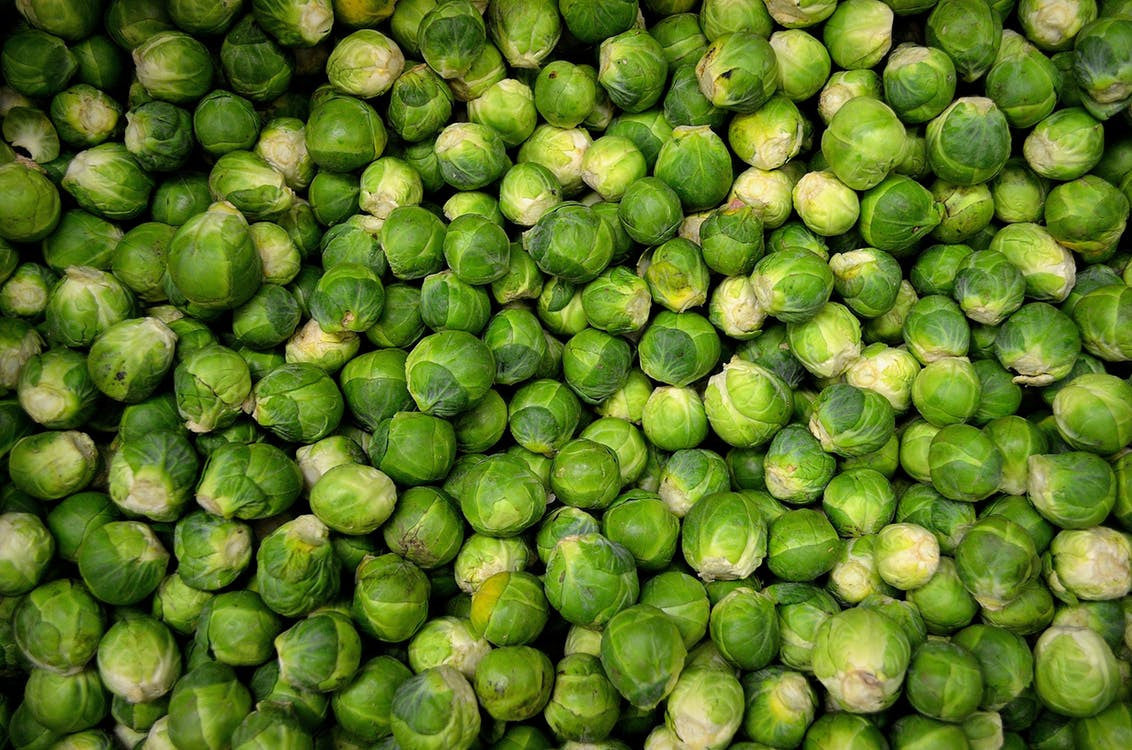
DIM: A Nutritionally Bright Idea 0
Perhaps our mothers knew more than they were letting on when they told us to eat our Brussels sprouts. Cruciferous vegetables—which include broccoli, cabbage, cauliflower, and kale—have long been favorites among doctors and nutritionists, and for good reason. Like other non-starchy vegetables, they are high in fiber and have a low glycemic load, meaning they have a minimal effect on blood sugar compared to starchier foods and grains. Cruciferous vegetables are a good source of vitamins and minerals (especially vitamin C, vitamin K and folate), and they contain sulfur, which is critical for supporting the liver during detoxification. Interestingly, this sulfur is also responsible for the unpleasant smell when these vegetables are overcooked.
But there’s something else that makes these foods one of the few categories all the different nutritional philosophies can agree on—including vegetarians, omnivores, low-carb followers, vegans and Paleo dieters. Cruciferous vegetables contain a compound called indole-3-carbinol, which our bodies metabolize upon digestion into diindolylmethane (DIM).
DIM is well-known for supporting healthy hormone levels in both men and women. In women, it favorably influences the ratios of estrogen metabolites while in men, it helps reduce the conversion of testosterone to estrogen, which can happen for a variety of reasons, including when excess body fat exists. (This can happen because our body fat produces an enzyme called aromatase, which can convert testosterone into estrogen.)
Because of the favorable effects DIM has on hormone levels that are associated with certain types of cancer, it has become a popular supplement in complementary and alternative medicine. Promising studies are showing that supplementation with this concentrated natural substance may also be helpful for supporting health when it comes to other issues not usually associated with imbalanced hormones.
When cells become damaged or reach the end of their lives, they are programmed to undergo a natural death, called apoptosis. Think of this like a self-destruct button for cells whose time has come. But sometimes, our cells lose their ability to undergo apoptosis, and instead, they continue to live, grow and reproduce. Supplementation with DIM has been shown to help “remind” damaged cells that they should engage in this self-destruct mode.
Remember the cell cycle from high school biology? In order for cells to reproduce and grow, they pass through a sequence of specific steps. New studies are showing that DIM may help inhibit unhealthy or damaged cells from completing the cell cycle.
While it is difficult to get enough DIM from consuming cruciferous vegetables alone, high-quality, effective DIM supplements are available and should be taken under the guidance of a qualified health care practitioner. However, the host of other benefits that come from foods like broccoli and kale mean that these vegetables should still make regular appearances on your dinner table. If all you remember about these are boiled, soggy, unappetizing foods your parents used to make you eat, think again. Cooked with a little creativity, these foods can make even the pickiest eaters go back for seconds. Here are some very tasty and very popular ways to make eating cruciferous vegetables delicious and enjoyable:
Roasted Broccoli with Garlic and Red Pepper
Balsamic Roasted Brussels Sprouts
Sources
Oncol Rep. 2012 May;27(5):1669-73. doi: 10.3892/or.2012.1662. Epub 2012 Jan 27.
Carcinogenesis. 2013 Aug;34(8):1815-21. doi: 10.1093/carcin/bgt122. Epub 2013 Apr 8.
- David Brady
- Tags: brussels sprouts nutrition DIM wellness and prevention
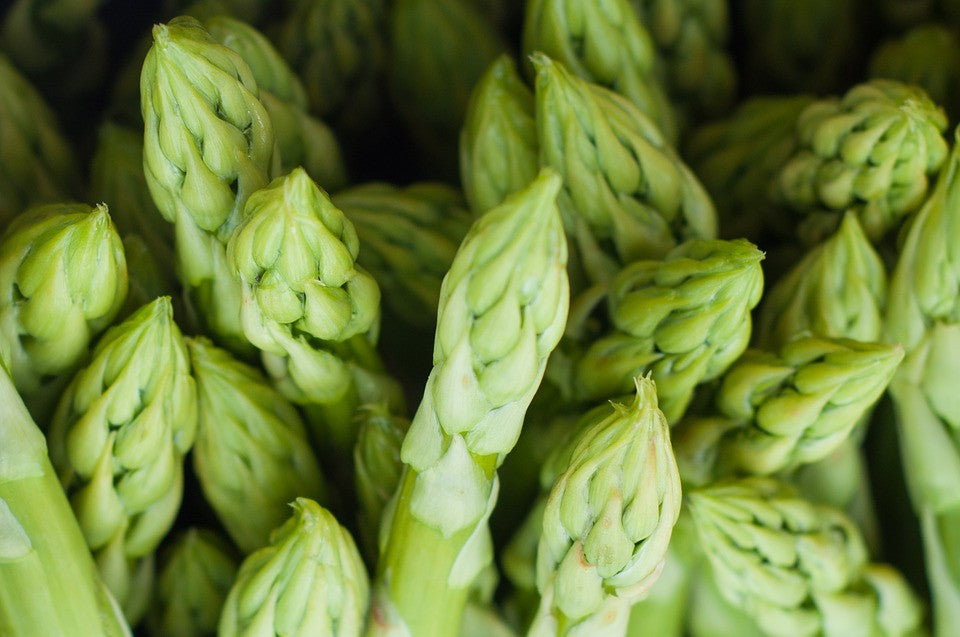
Please Pass the Asparagus 0
Tender stalks of asparagus peeking their heads through the soil and emerging after a long winter is a welcome sign of spring. Eaten raw as part of a vegetable crudité platter, or grilled with lemon juice and olive oil, asparagus is a delicious snack or addition to a meal. But this vegetable brings more than nice flavor to the table; it’s also no slouch when it comes to health benefits.
Like other green vegetables, asparagus is a good source of several nutrients, particularly folate and vitamin K1. It also contains significant amounts of iron, copper, and manganese, along with vitamin C and carotenes, the latter of which are the precursors to vitamin A. As a non-starchy vegetable, it’s low in carbohydrate and high in fiber, making it a good go-to for low-carb and vegetarian meals alike.
Aside from its impressive nutrient content, asparagus contains compounds that have been shown to have beneficial effects for a number of health concerns. Mouse models of different types of cancer suggest that extracts isolated from asparagus may help cancer cells undergo apoptosis—a kind of “self-destruct mode” that cancer cells usually evade in order to perpetually stay alive and reproduce. These compounds may also help existing chemotherapy drugs work better, by making cancer cells more sensitive to their effects.
Two other areas where asparagus compounds have shown promise is in kidney health and chronic stress. Asparagus contains a substance that naturally inhibits activity of angiotensin-converting enzyme (ACE), an enzyme involved in regulating blood pressure. (You have probably heard the term “ACE inhibitors” used to describe drugs that help lower blood pressure.) Hypertension is very harmful for the kidneys, so maintaining a healthy blood pressure is key for kidney health.
As for stress, one of the most common and detrimental sources of stress in modern life is insufficient sleep. Not getting enough sleep can lead to elevations in cortisol, one of the hormones responsible for the “fight or flight” mechanism that helps people deal with stressful situations. However, chronically elevated cortisol levels can lead to weight gain and imbalances in other hormones. Asparagus extracts have been shown to help reduce cortisol levels and markers of stress-induced cellular damage in animal models of stress caused by sleep deprivation.
Of course, health benefits probably aren’t the first things that come to mind when you think about asparagus. More likely, you immediately think of the very unique odor asparagus imparts to your urine! Believe it or not, it’s a fairly contentious issue. It seems there are genetic factors involved in how much of the causative substances people produce, and in an even stranger turn of events, people differ in their ability to detect the odor—that is, some people who produce the odor can’t smell it!
If you’ve only ever seen the common green asparagus, you might be surprised to learn there are purple and white varieties, too. Purple asparagus owes its color to higher amounts of anthocyanins, phytochemicals that also lend color to blueberries, raspberries, and other similarly colored fruits and vegetables. Purple asparagus tends to be sweeter and have thicker stalks than the green. White asparagus retains its white color because the stalks are grown under a mound of soil, preventing the development of chlorophyll and the emergence of the green pigment.
If you’re thinking that asparagus is one of the last things you’d want to eat more of, that’s probably because the only way you’ve ever had it is boiled until soggy and lifeless—or worse, from a can. Try your hand at preparing it in other ways to reacquaint yourself with this tasty and nutritious spring vegetable. Drizzle with olive oil and toss with salt and pepper, then roast at a high temperature to bring out the surprising sweetness of asparagus. You can also pop it on the grill—perfect for outdoor entertaining as the weather warms up. (An indoor grill pan works just as nicely.)
Sources
- Ito T et al. Enzyme-treated asparagus extract promotes expression of heat shock protein and exerts antistress effects. J Food Sci. 2014 Mar;79(3):H413-9.
- Sanae M1, Yasuo A. Green asparagus (Asparagus officinalis) prevented hypertension by an inhibitory effect on angiotensin-converting enzyme activity in the kidney of spontaneously hypertensive rats. J Agric Food Chem. 2013 Jun 12;61(23):5520-5.
- Xiang J et al. Anticancer effects of deproteinized asparagus polysaccharide on hepatocellular carcinoma in vitro and in vivo. Tumour Biol. 2014 Apr;35(4):3517-24.
- David Brady
- Tags: asparagus and stress benefits of asparagus wellness and prevention

Hibiscus - Kidney Support and Beyond 0
Hibiscus is an herbaceous plant well known for its showy, brightly colored blossoms that not only are beautiful, but also contain an array of health benefits. Gardeners may strategically use these flowers to attract birds, bees and other insects, while Hawaiian and Tahitian women are known to adorn their hair with hibiscus blossoms. If worn over the right ear the flower marks that the woman is single, but if worn over the left ear the flower declares that she is taken!
There are hundreds of varieties of the hibiscus flower native to temperate, subtropical and tropical areas of the world. Certain species have been chosen as the national flowers of Malaysia, South Korea and Haiti, and as the state flower of Hawaii. In India, the red hibiscus flower represents the Hindu goddess Kali, appearing intertwined with the image of the goddess herself.
Despite the colorful, cultural history of hibiscus flowers, the chemical compounds residing within their beautiful petals are far more attractive to those seeking health and wellness. Among all of the varieties, Hibiscus sabdariffa (otherwise known as Roselle) is the dominating species in the world of health. The compounds housed within the flowers consist of a hearty dose of healthy acids and protective antioxidants. These beneficial components are most often delivered in the form of tea. A quick look at the ingredient lists of many common herbal tea concoctions will prove the popularity of this herbaceous plant. Due to the presence of a chemical component known as anthocyanin, hibiscus will turn any beverage a colorful pink or red, making it a common choice for brightly colored iced tea during the summer.
In the world of health advocacy, anthocyanins and other naturally occurring compounds known as polyphenols, are of great interest because of their ability to act as antioxidants and support a healthy cardiovascular system. These antioxidants, housed within red hibiscus flowers, have been shown to protect healthy cholesterol from the damaging effects of free radicals. LDL cholesterol is a target for free radicals; once it has been destroyed by the free radicals, it is able to more efficiently “stick” to vessel walls and contribute to plaque development. As plaque builds up, blood pressure begins to soar. By protecting LDL cholesterol from the damaging free radicals, the antioxidants found in hibiscus may support healthy blood pressure and a healthy cardiovascular system.
The antioxidants found in hibiscus not only support a healthy heart, but also protect other important organs of the body. For instance, free radicals can be harmful to the kidneys; however, some studies found that the antioxidants in hibiscus were helpful in restoring and supporting damaged kidneys.
Speaking of kidneys, hibiscus appears to be a good friend to the entire urinary tract. Many individuals are plagued with various harmful organisms that like to make the urinary tract their home. Whether fungus or bacteria, these critters are responsible for urinary tract infections that cause burning, itching and painful symptoms. Interestingly, the compounds found in hibiscus create an environment in the urinary tract that is not so friendly toward invaders. Therefore, hibiscus can help protect the urinary tract from infection, and support this system when it is under attack by microorganisms. Unfriendly yeast presents a particularly challenging situation since few pharmaceutical drugs are available to treat it; however, hibiscus can assist the body in fighting these fungal infections in order to help restore a healthy urinary tract. The helpful compounds found in hibiscus are also found in cranberries, which are often touted as a helpful food for maintaining healthy urinary tracts.
So, the next time you find yourself reaching for a cup of tea, whether steaming hot or ice cold, consider relaxing with a cup of hibiscus. Not only will the extra dose of antioxidants help keep your cells strong and healthy, but your kidneys and urinary tract will also thank you for the health benefits this wonderful herb provides.
- David Brady
- Tags: hibiscus kidney health natural kidney support wellness and prevention
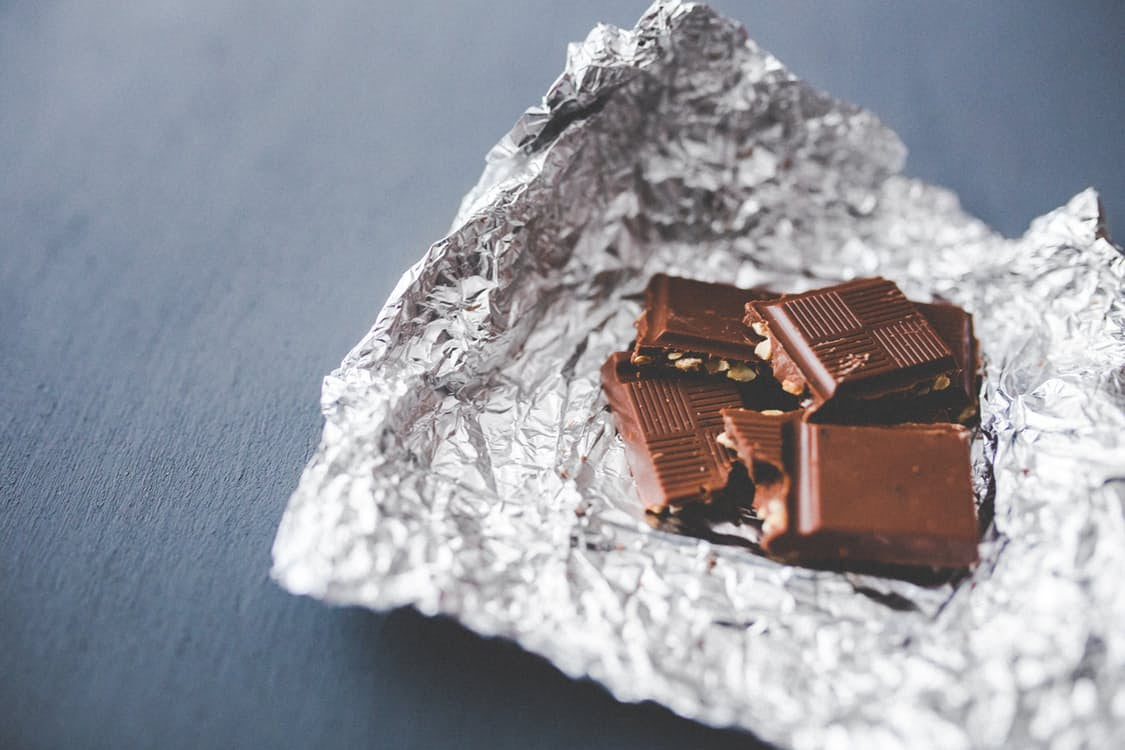
Chocolate: The Valentine Treat That Loves You Back 0
Here it comes again. We haven’t even recovered from the holiday candy feeding frenzy that started with Halloween and went straight through Christmas, and already we’re inundated with even more candy leading up to Valentine’s Day and Easter. Even the most iron-willed among us, who are navigating our way through our New Year’s resolutions to eat better, can hardly resist the sugar-crusted marshmallows, and milk chocolates coated in red and pink candy shells. It’s as if those heart-shaped boxes adorned with flowers and lace, and candy wrapped in eye-catching red foil, were designed to tempt us into submission. Aren’t there any treats lurking among this barrage of refined sugar that can give a sweet tooth a little satisfaction with fewer metabolic consequences?
Consider dark chocolate! It’s not exactly a superfood, but it does have a few things going for it. After all, chocolate’s botanical classification is Theobroma cacao, with “Theobroma” meaning “food of the gods.” So, there’s got to be something good about it!
Think of chocolate as belonging to the same category as red wine: a sensible indulgence that can actually be good for us—consumed in moderation, of course. Like red wine, cocoa contains polyphenols that may be beneficial for cardiovascular health and for supporting a healthy inflammatory response. In fact, cocoa contains some of the same catechins, anthocyanins, and proanthocyanidins present in antioxidant-rich, darkly colored berries, as well as in green tea and red apples.
The content of polyphenols in chocolate products depends on how much of the non-fat cocoa solids are in the product. Non-fat cocoa solids account for the polyphenol “storage area” of cocoa. Cocoa powder has the highest polyphenol content (72%-87%), followed by baking chocolate (45%-49%), dark chocolate (20%-30%), semi-sweet (15%-19%), and milk chocolate (5%-7%). Darker chocolates not only have higher amounts of beneficial polyphenols than semi-sweet and milk, but in general, they also have less sugar, because the higher the percentage of cocoa, the lower the sugar content as well.
When it comes to cocoa powder, recipes sometimes specify “natural” or “Dutched” cocoa. Dutching involves reducing the acidity and somewhat harsh flavors cocoa may have. (Natural cocoa is slightly acidic, while Dutched cocoa is closer to a neutral pH.) The success of the recipe depends on the type of cocoa used (mostly due to how the two cocoas interact with leaveners), but it’s important to note that the Dutching process reduces the polyphenol content of cocoa.
Regular consumption of natural cocoa has been linked to the support of healthy blood pressure and cardiovascular health. Cocoa polyphenols may also exert protective effects upon the LDL particles that carry cholesterol throughout the bloodstream. The reduction in blood pressure may be due to cocoa’s influence on activating a compound called nitric oxide synthase, which creates nitric oxide. Nitric oxide helps to relax blood vessels and this allows blood to flow through more easily. And let’s not forget—the enjoyment we get from an occasional square of good quality chocolate might help us relax, too!
Aside from the polyphenols and antioxidants cocoa provides, cocoa is also a rich source of fat. However, according to the American Journal of Clinical Nutrition, the predominant fatty acid in cocoa butter—a saturated fat called stearic acid—has a neutral effect on blood lipids. (This means it does not adversely affect the ratio of HDL to LDL or total cholesterol.) And the second-most predominant fatty acid in cocoa butter is monounsaturated oleic acid—the same one believed to be responsible for olive oil’s heart-healthy status. So, compared to inexpensive chocolates loaded with the trans fats in partially-hydrogenated soy and cottonseed oils, good quality dark chocolate contains fats that may actually be good for us.
For a luscious cold weather treat, and something great for curling up near a fireplace, consider a mug of homemade hot cocoa. Made with natural, unsweetened cocoa powder, whole milk, and stevia, xylitol or erythritol to sweeten, this is something sure to beat the winter blues without spiking blood sugar too much. (Those who are dairy intolerant can use almond or rice milk.) For a thicker and extra-luxurious texture—and an even bigger nutritional boost—use coconut milk. Opt for full-fat coconut milk, rather than “lite,” since the beneficial portion of coconut (aside from its high fiber content) is found in the fat. It’s true! Two of the fatty acids in coconut—lauric and capric acids—are known to be antimicrobial, and the medium-chain triglycerides that predominate in coconuts are metabolized into a special type of molecule called ketones, which are beneficial for memory and cognitive function, and for supporting overall neurological health.
For a spicy Mexican-style cocoa, add a pinch of cinnamon and cayenne pepper, both of which contribute health-promoting qualities of their own. Cinnamon may be beneficial for moderating blood sugar, while cayenne pepper is a natural pain reliever, it helps support a healthy inflammatory response, and its warming effect in the body may be beneficial in supporting proper weight management.
From a nutritional standpoint, dark chocolate may not be equivalent to a grass-fed steak and a pile of steamed broccoli, but the Cleveland Clinic, one of the country’s leading medical centers agrees: it beats the pants off marshmallows and candy hearts!
This isn’t a license for us to eat endless amount of chocolate, so when we want to indulge, we should treat ourselves to the good stuff! Here are some recipe ideas for indulging a chocolate craving sensibly:
- Dark chocolate sea salt almond bark
- Chocolate almond coconut bark
- Low-carb chocolate bark
- Ridiculously delicious Paleo hot chocolate
- Peppermint hot chocolate
For more chocolate recipes—many of which are low-carb, gluten-free, and/or dairy free, visit the chocolate recipes on dessertstalker.com.
- David Brady
- Tags: dark chocolate healthy chocolate wellness and prevention
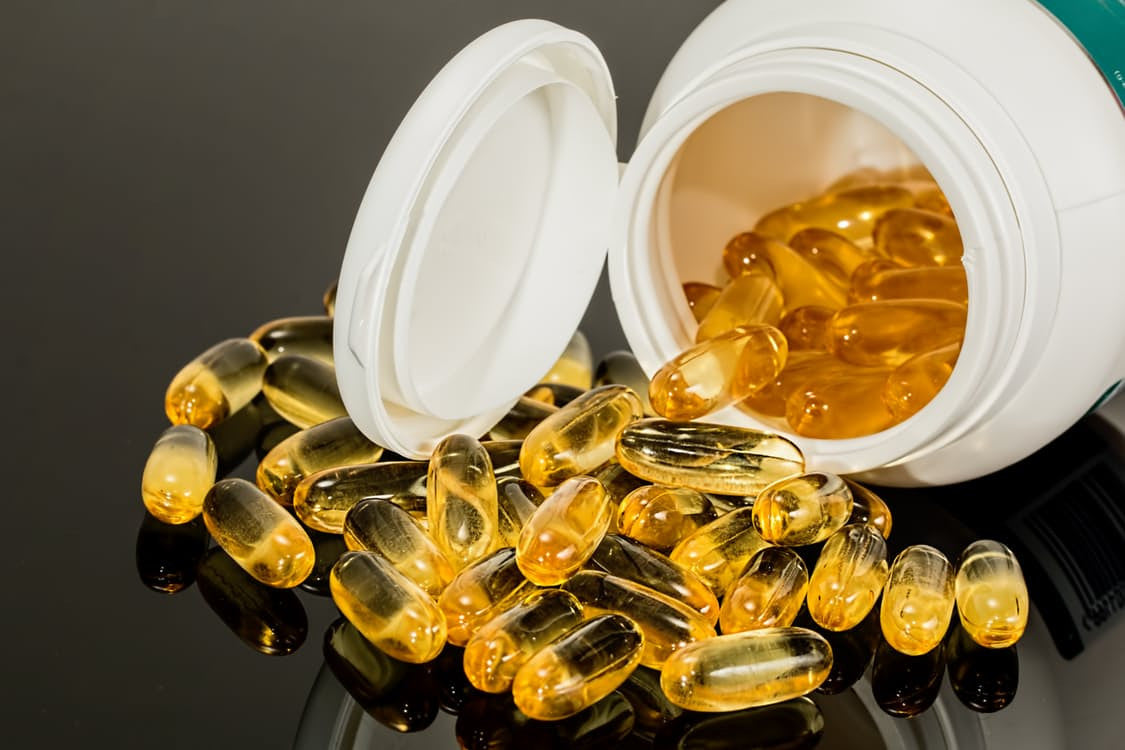
Omega-3 Fatty Acids and Hearing Loss 0
The sense of hearing is certainly a wonderful gift, yet it is one that is widely taken for granted – that is, until noticeable changes start to occur. For many, hearing loss is simply accepted as part of the aging process. However, age-related hearing loss leads to difficulties and frustrations with everyday communication and can greatly contribute to the loneliness and depression that is so pervasive among the elderly.
The inescapable reality exists that aging elicits some degree of hearing loss in most individuals. It is, quite simply (and unfortunately), part of getting older. According to the National Institute on Deafness and Other Communication Disorders (NIDCD), “…18 percent of American adults 45-64 years old, 30 percent of adults 65-74 years old, and 47 percent of adults 75 years old or older have a hearing loss.” While some of these cases can be attributed to long hours spent in a loud factory, listening to loud music or frequent exposure to high pitch sounds (all of which may produce irreparable hearing loss), it is also hopeful to note that there are dietary measures that can be taken to support auditory health and help preserve this important sensory tool, in spite of aging.
An important and often lacking dietary fat, known as omega-3 polyunsaturated fatty acids (PUFAs), may play an important role in the ability to hear sounds adequately, especially as we age and normal auditory function starts to decline. This fat is found abundantly in fish and seafood – a category of protein that is not considered an American staple. An interest in the relationship between omega-3 PUFAs and auditory health was spawned by a recent study that discovered a correlation between fish intake and age-related hearing loss. In this study, individuals over 50 years of age who ate fish two or more times each week were less likely to develop age-related hearing loss compared to those who did not consume fish on a regular basis. Therefore, it was concluded that adequate intake of omega-3 PUFAs may protect the ear from age-related decline and subsequent hearing loss – a promising outcome indeed.
The ability of this amazing fat to protect hearing is not completely understood; however, omega-3 fats are known to accomplish many beneficial tasks in the body, which may indirectly influence auditory health. For example, omega-3s are known to support healthy blood flow and a healthy cardiovascular system. The most important part of the ear – the cochlea – contains many small, fine hairs that help us distinguish tones. The cochlea and these important hairs are fed by one main blood vessel that delivers oxygen and nutrients to the ear. As we age, blood flow may slow down as a result of high cholesterol, plaque development, hardening of the arteries and other similar conditions. The cochlea is sensitive to changes in blood flow and may not be fed adequately, leading to degeneration. Therefore, by helping to support a healthy cardiovascular system and healthy blood flow, omega-3 PUFAs may support the overall wellness of the inner ear, helping to hinder age-related deterioration that may lead to hearing loss.
It is a wise idea, at virtually any age, to safeguard the delicate structures of our ears as best we can. We should all be cognizant of limiting our exposure to a barrage of loud noises (i.e., firecrackers, power tools, high decibel concerts, even extended periods of time using personal listening devices that require earbuds). Yet, it is encouraging to know that nutritional support from omega-3 fats, through adequate fish consumption and additional supplementation, can be beneficial in helping to protect the gift of hearing.
